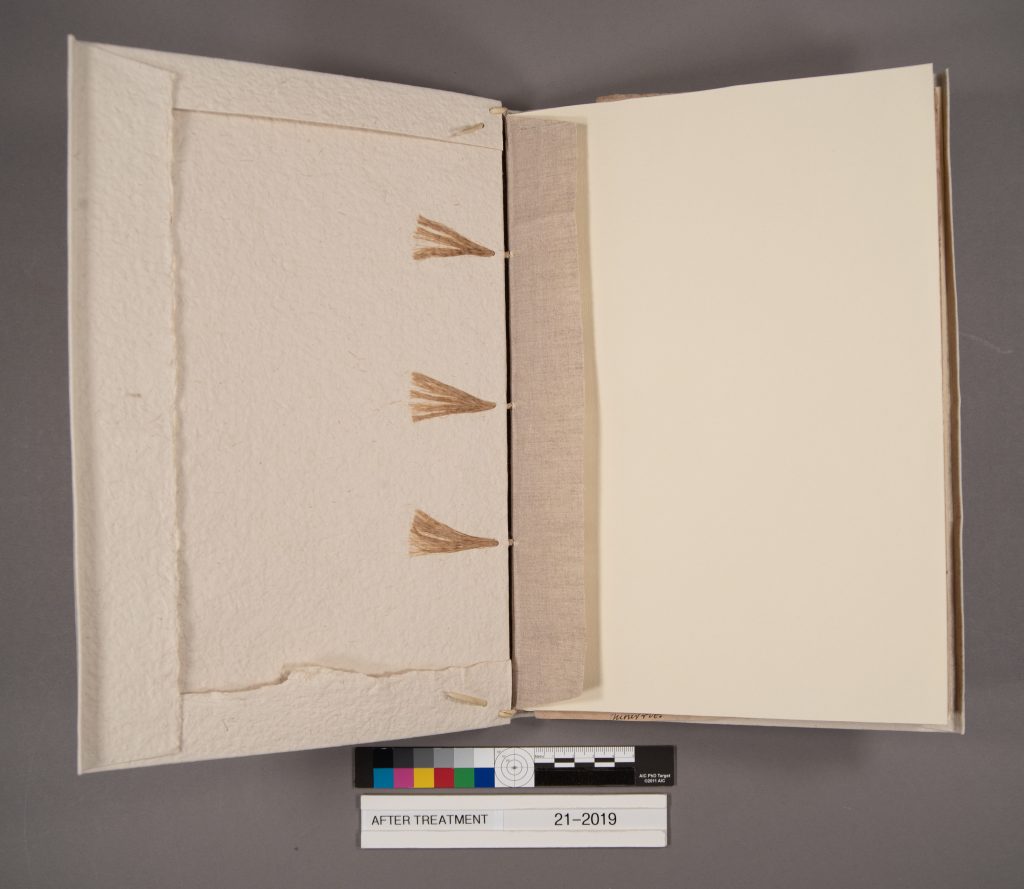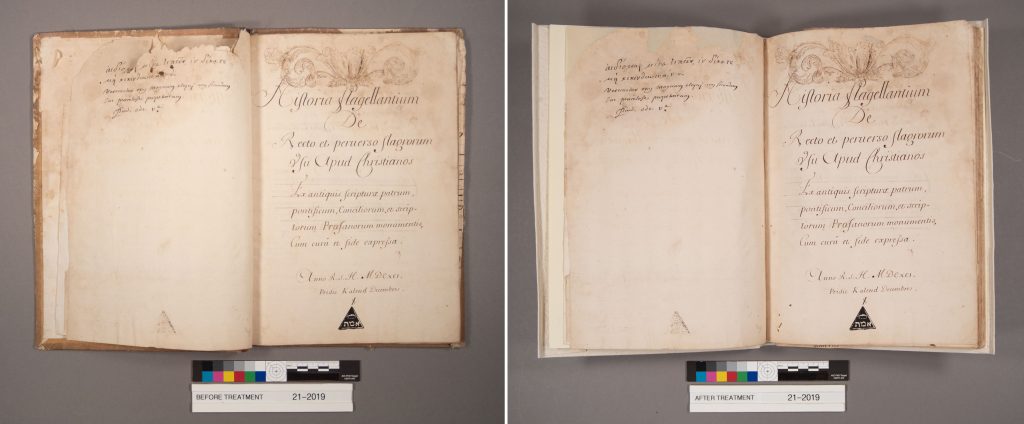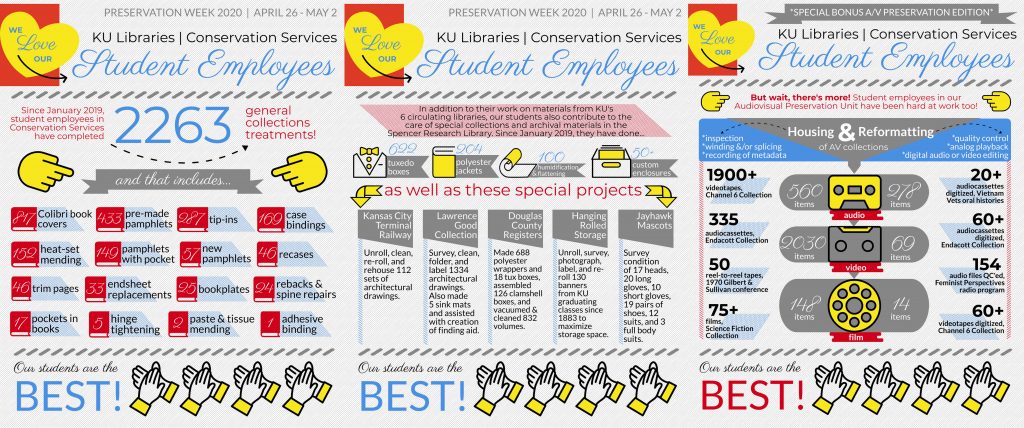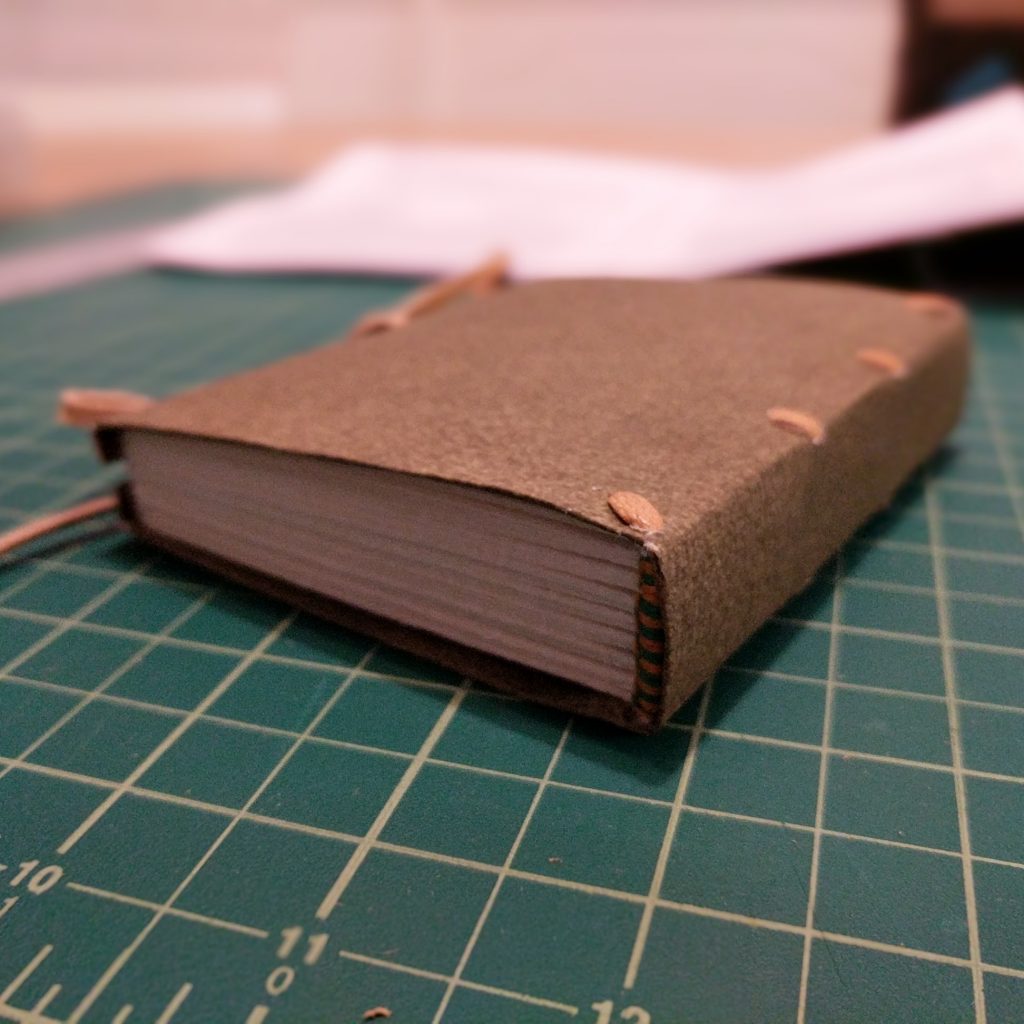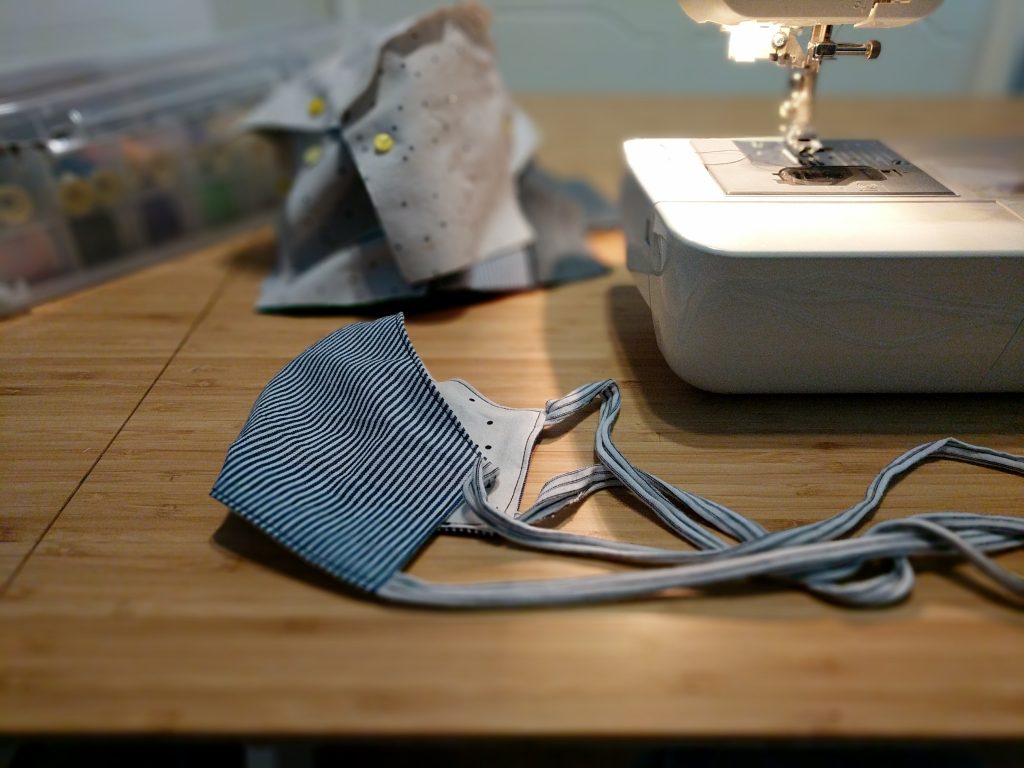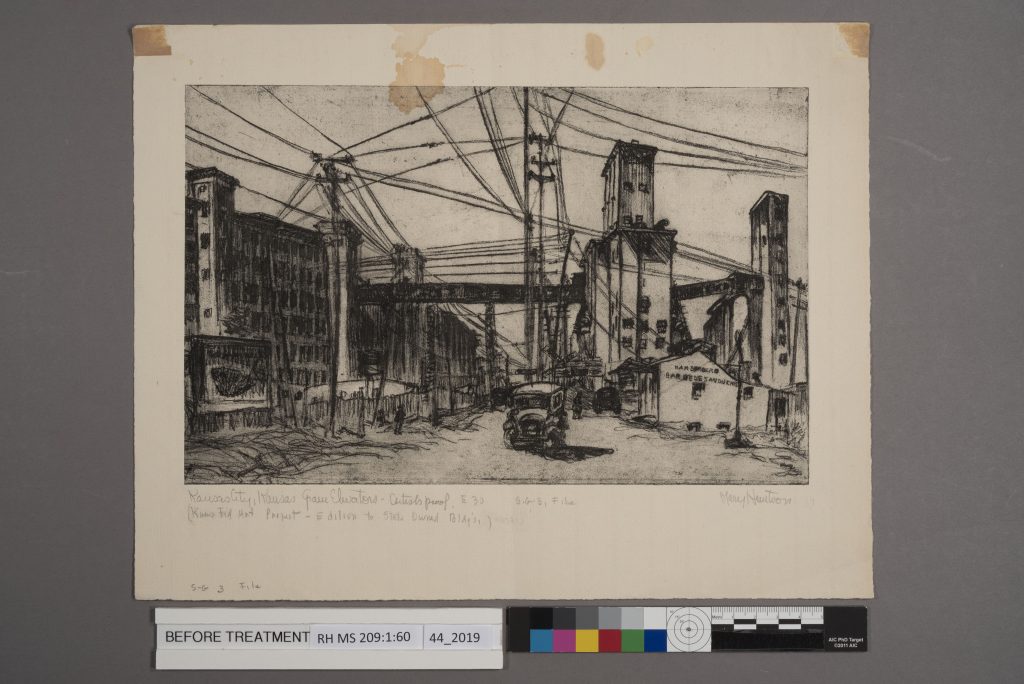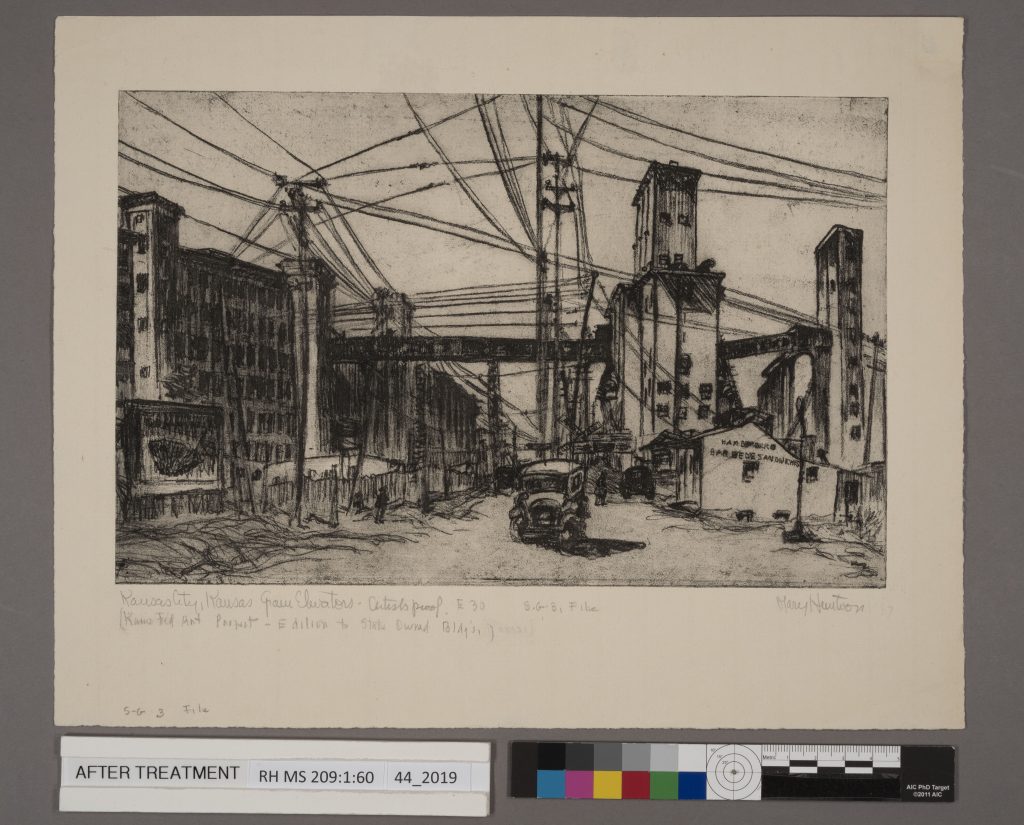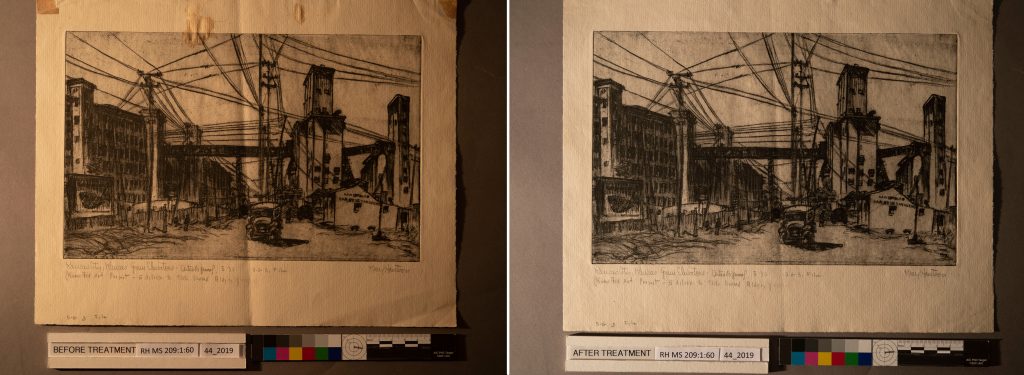Repairing Zapolote: a Conservation Treatment for a Lithograph by Mary Huntoon
April 14th, 2021Zapolote, also known as The Goose Woman is one of nine known lithographs by Kansas artist Mary Huntoon. Based on Huntoon’s notations, we know that this single edition print was made in 1923 while she attended the Art Students League in New York, NY. Zapolote is a mysterious image depicting the silhouette of a seated woman contrasted by a bright full moon surrounded by dark clouds. Huntoon used broad, arching lines to hint at the woman’s surroundings, which are generally abstract, and allude to a rippling pool at her feet.
This work is part of a large collection of prints, drawings, and watercolors by Huntoon at the Kenneth Spencer Research Library. Along with the Huntoon collection at the Helen Foresman Spencer Museum of Art, this collective holding at KU is regionally significant, connecting KU to other regional and national collections (e.g., Alice C. Sabatini Gallery in Topeka, Kansas; Mulvane Art Museum at Washburn University in Topeka, Kansas; and the Philadelphia Museum of Art).


I prioritized this print for conservation treatment during a condition survey of Huntoon’s collection of works because the print had sustained significant pest damage (see images 1-2). The entire upper right corner was lost as well as a few other smaller areas across the top edge. Tiny bite marks were visible along the edges and a long strip of the remaining top edge of the sheet was at risk of tearing off during handling.
Conservators use several techniques for filling paper that is lost. The most common approach is to attach a new piece of paper with a similar thickness, color, and texture that is cut to fit inside the loss like a puzzle piece. The downside to this approach is that the search (and creation) of such a fill is often time-intensive. Even when the edge of the fill is beveled or butt-joined, a small seam is usually visible. The rough and jagged edges created by the hungry pest along this particular loss further complicated the shaping and stabilization process.
I had an opportunity, however, to use a simpler approach that would help stabilize the jagged edges and save time searching for the perfect fill paper: pulp fills. Pulp fills are a great method for filling paper because unlike the method described above, there is a much smoother transition between the original sheet and the fill. In this technique, wet paper pulp is dropped into the area of loss as a slurry, and can be built up to the same thickness as the print. This type of filling method can only be done if the entire print can be washed in advance because the print needs to be wet during this process. Fortunately, my testing confirmed that this print would be safe to wash.
Next, I consulted my small collection of pre-cast paper pulp, all from high quality papers that had been previously washed. I selected two different colored paper pulps to mix together to make the best possible color match (see image 3). Then the pulp was reconstituted into a slurry with water and mixed thoroughly (see image 4).


After the pulp was ready, I used a pipette to drop small amounts into the area of loss. This was completed on a light table so I could match the thickness of the pulp with the thickness of the paper. I used a vegetable scrubber and curved tweezers to tamp down and shape the pulp into a smooth mat. A sheet of cotton blotter and clear polyester sheeting was also used to control the amount of water in the pulp slurry and anchor and cast the pulp. In about thirty minutes, I had already filled the entire upper right loss (see images 5a-c).
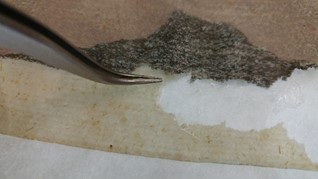
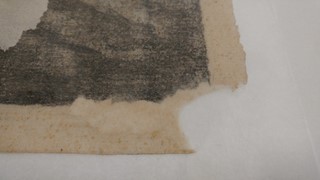

Once all the fills were completed, I dried the print between cotton blotters under moderate weight. After the print was fully dry, I assessed the pulp fill. Since the loss was in an area that would be used to attach it for display and/or handling, I decided to reinforce it with a very thin piece of Japanese paper, called tengucho. This would add extra strength to the area, but not change its visual effect. Finally, the edges of the pulp fill were toned slightly with graphite pencil and colored pencils to match the color of the rest of the sheet. Now that the treatment is finished, the pulp fills help to complete the print and bring the viewer’s eye back to the image area and away from the damage.
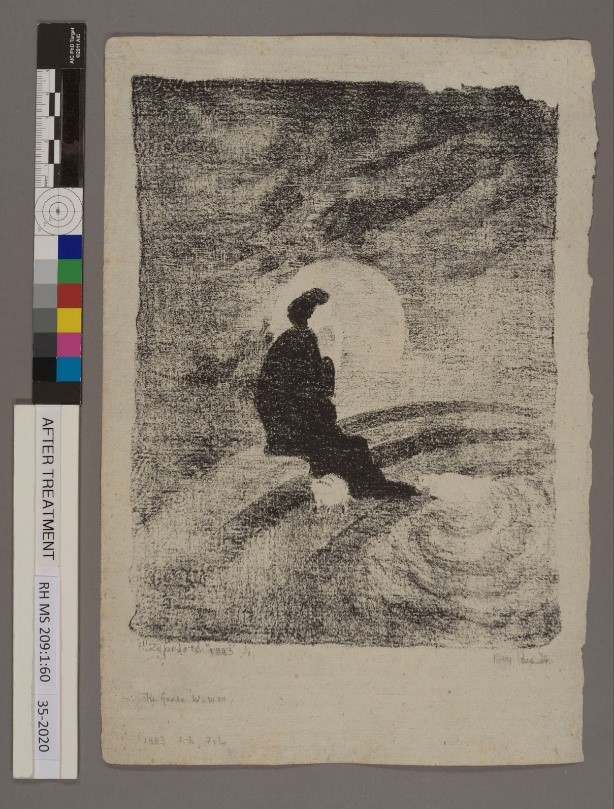
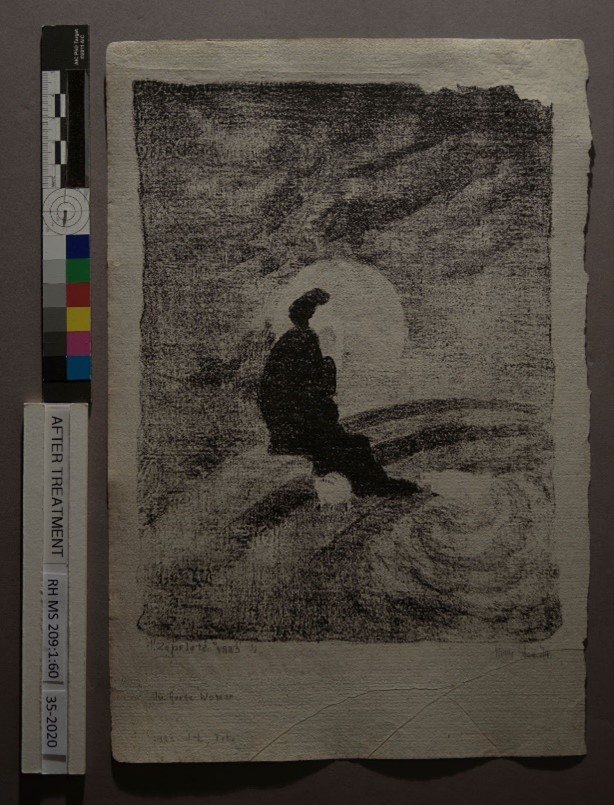
Zapolote will be on view this fall 2021 at the Kenneth Spencer Research Library for the exhibit, Mary Huntoon: Artist and Art Therapist, and will feature several more examples of conservation treatments in this collection. We look forward to seeing you there!
Jacinta Johnson
Associate Conservator, Mellon Initiative








